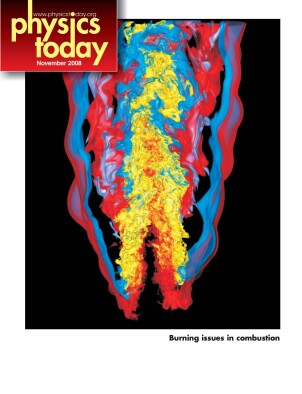The Demon and the Quantum: From the Pythagorean Mystics to Maxwell’s Demon and Quantum Mystery
DOI: 10.1063/1.3027993
Notable physicist Marian Scully has contributed to the discovery design, and interpretation of many quantum effects, devices, and puzzles. In The Demon and the Quantum: From the Pythagorean Mystics to Maxwell’s Demon and Quantum Mystery, he contributes endnotes to a book principally penned by his son, Robert. Written with the goal of explaining the secrets of the quantum in layman’s terms, the book ends up painting a lively, readable portrait of the genesis of modern physics. A diesel mechanic, Robert Scully gains readers’ sympathy and attention by declaring at the outset that he is not a physicist. He also disarmingly explains the fortuitous reasons for his unusual familiarity with many famous physicists, including several Nobel laureates, who attended barbecues at his father’s ranch during his childhood.

In the first half of the book, the reader is guided step by step along a wonderful journey across the highest physical concepts. Before each step, Scully gives a thoughtful, brief introduction not only to the physics that motivates the theories but also to the human sides of the ancient mathematicians, philosophers, and modern pioneers of classical or quantum theory who contributed to shaping the next concept he will introduce. The smart introductory episte-mological essays set a novel-like rhythm, dilute the difficult concepts, and stimulate the reader’s curiosity.
The second half, with its extensive set of endnotes, can be disregarded by the nontechnical reader. But those who have some mathematical background will find well-written, concise mini-lectures that translate the descriptions, ideas, and inferences of the first part into the proper technical language of mathematical physics. The consistency of the main chapters with the rigorous material of the endnotes allows for discussions in the first part that are never oversimplified and makes The Demon and the Quantum satisfying also to readers who have a strong physics background.
The Scullys successfully explain counterintuitive quantum effects, such as wave–particle complementarity and delayed-choice and which-path information erasure in two-slit interference experiments. Less clearly outlined and convincing are the discussions of Maxwell-demon aspects of Stern–Gerlach experiments and quantum heat engines. Yet that flaw is not the authors’ fault: It is a fair representation of the status quo. The role of thermodynamic concepts in quantum theory is still far from fully understood. No definitive word has been written about which exorcism prevents the demon from threatening the validity of the second law of thermodynamics. It is actually very exciting to see the strong revival of thermodynamics in today’s scientific literature. About three decades ago, almost every physicist was convinced that thermodynamics was a dead subject and that the final word about it had been said by statistical mechanics. Pioneers who dared to reveal the demons of statistical mechanics and who worked at more consistent theories aimed at unifying quantum mechanics and thermodynamics lost their jobs.
Today, perhaps because of the impressive recent advances in single-particle experimental techniques, one might say that the quantum is finally becoming thermal. After having been kicked out of the front door 30 years ago, thermodynamics has now reentered through the back window and is once again permeating the physics literature as a source of inspiration. Scully’s book shows how historic contributions in physics are not made by those who publish papers by the hundreds or who get funding by the millions, but by the few thinkers and independent minds who have the strength to step out of the race, and quietly identify and address the big questions.
Perhaps in the next edition, Scully could complete the picture with a selection of the physicists, chemists, and engineers who long ago broached the key questions being addressed today by those who study quantum demons and heat engines. Some of those issues are covered in, for example, Meeting the Entropy Challenge: An International Thermodynamics Symposium in Honor and Memory of Professor Joseph H. Keenan (AIP, 2008), which I coedited with Ahmed Ghoniem and George Hatsopoulos. Overall, The Demon and the Quantum is accessible to a large spectrum of readers of Physics Today; it is worthwhile reading even though, in the end, the book turns out to be more convincing in explaining the quantum effects than in clarifying the demon conundrum.
More about the Authors
Gian Paolo Beretta is a professor of thermal sciences and mechanical engineering at the University of Brescia in Brescia, Italy. He specialized in axiomatic foundations of thermodynamics and was among the first to develop a fully quantum theory of irreversibility.
Gian Paolo Beretta. University of Brescia, Brescia, Italy .




